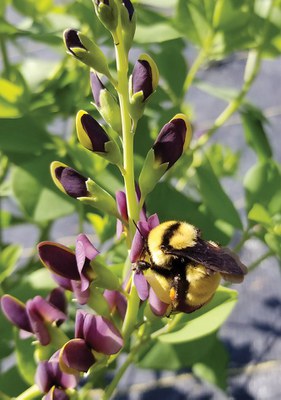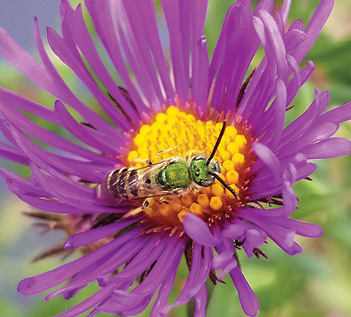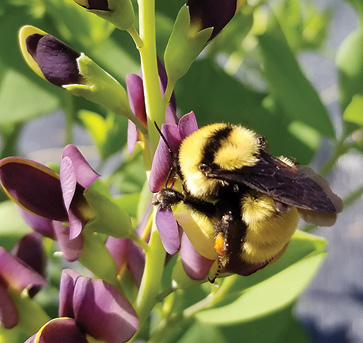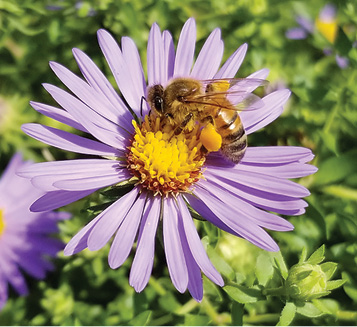Asters recently have been assigned to the genus Symphyotrichum and have much diversity in growth habit and flower color. This group blooms from late August until the first heavy frost.
Flowers can be light to dark pink, light to dark purple and even light blue like a robin’s egg. In North Dakota, these perennial flowers often will not complete flowering due to the cold temperatures in early fall.
However, these late-season perennial flowers are good sources of food for pollinators, especially because the availability of food for honey bees, bumble bees and migrating butterflies such as the monarch are scarce in early fall. Bees need to store plenty of food in their honey hives or nests to survive the winter season.
Aster flowers (Table 1 and Figures 7 and 8) are mostly visited by bees (Figure 9) and syrphid flies (Figure 10). Butterflies also will visit these flowers, but less frequently than bees and syrphid flies. The native species Symphyotrichum novae-angliae (New England Aster) and its cultivar, Alma Potschke, were heavily visited by honey bees (Figure 8).
Alma Potschke and Purple Dome are cultivars of Symphyotrichum novae-angliae. The native species is 5 feet tall, lanky and sprawling in appearance. Alma Potschke, with its magenta-colored flowers, is shorter at 42 inches, but still may need staking to prevent stem lodging.
Purple Dome has a more compact growth habit of 30 inches with very attractive purple flowers. In years with early heavy frosts, cold temperatures may cause Purple Dome to go dormant before reaching full bloom. During the study, Purple Doom started to bloom in late September in southeastern North Dakota. However, it is a spectacular plant in years when frost is delayed.
Dream of Beauty, October Skies and Raydon’s Favorite are cultivars of the native species Symphyotrichum oblongifolium (aromatic aster). Symphyotrichum oblongifolium and the cultivar Raydon’s Favorite bloom too late in the fall to be reliable for pollinators in North Dakota.
Dream of Beauty has light pink flowers and fits in the smallest gardens at only 18 inches tall. October Skies blooms later than Dream of Beauty and has light blue flowers. The growth habit of October Skies is more like a short shrub and grows to 2 feet tall and 4 to 5 feet wide.
Honey bee (on the left side) and wild bee (on the right side) collecting pollen from a Symphyotrichum novae-angliae flower. (V. Calles-Torrez, NDSU)
Two different syrphid flies visiting a Symphyotrichum sp. flower. (V. Calles-Torrez, NDSU)
















